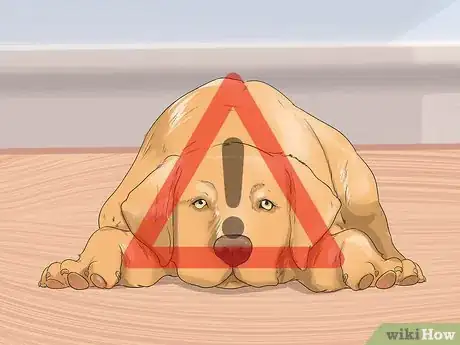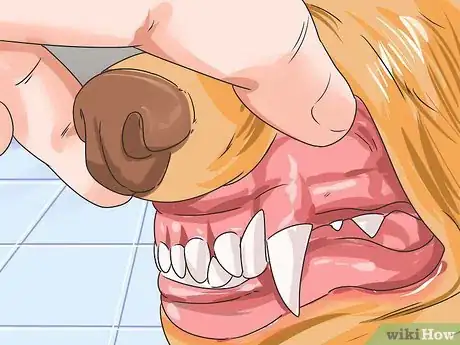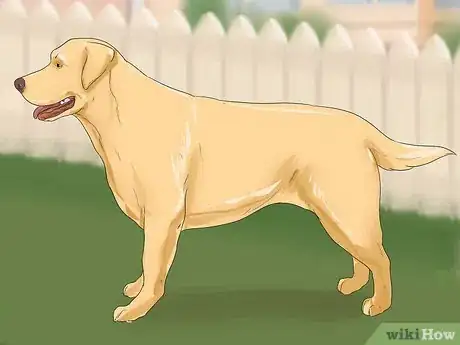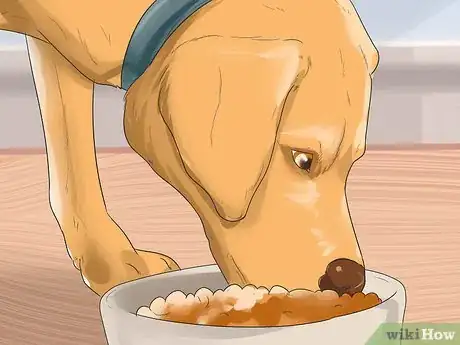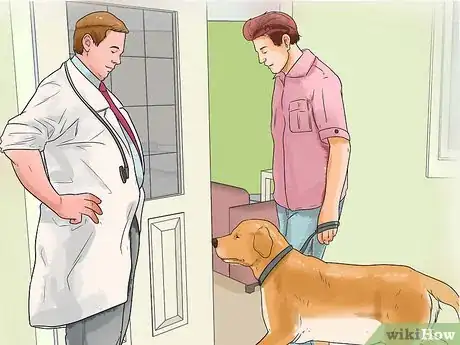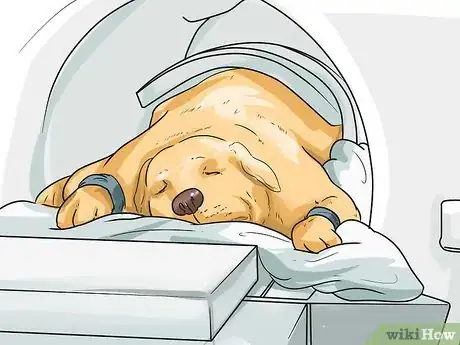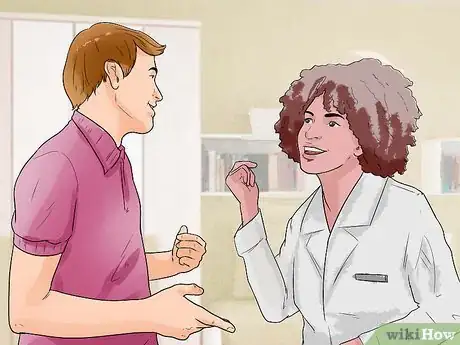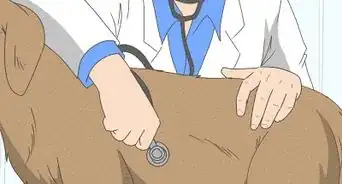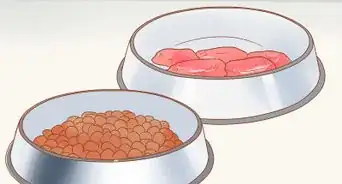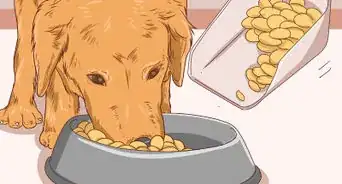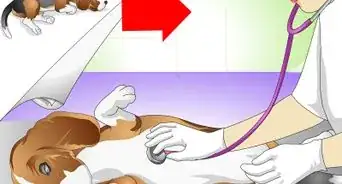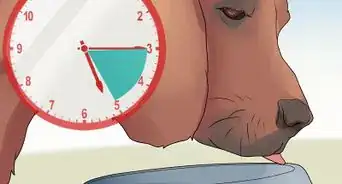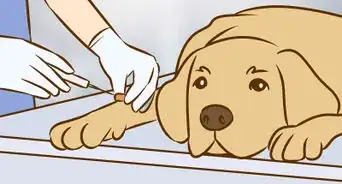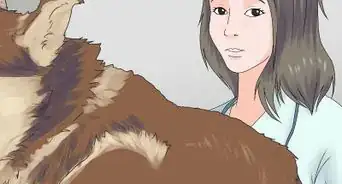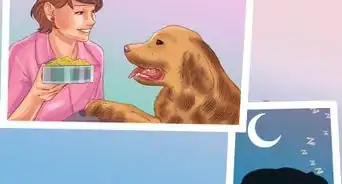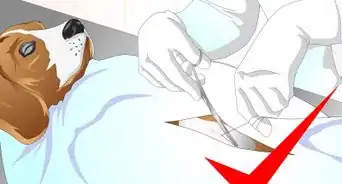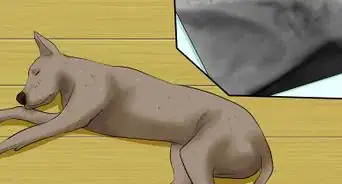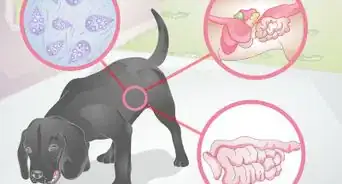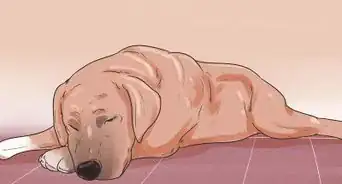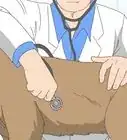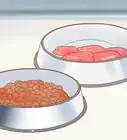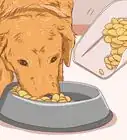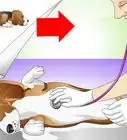This article was co-authored by Pippa Elliott, MRCVS. Dr. Elliott, BVMS, MRCVS is a veterinarian with over 30 years of experience in veterinary surgery and companion animal practice. She graduated from the University of Glasgow in 1987 with a degree in veterinary medicine and surgery. She has worked at the same animal clinic in her hometown for over 20 years.
There are 9 references cited in this article, which can be found at the bottom of the page.
This article has been viewed 18,612 times.
Gastric torsion and bloat, or GDV, is a serious veterinary emergency in dogs. It involves the stomach filling with air and then twisting along its long axis.[1] As the stomach twists, it cuts off blood supply to the stomach tissues along with associated other tissues connected to the outside of the stomach. Needless to say, this causes serious consequences to the health of the affected dog and if you suspect your dog has this problem please call your veterinarian or veterinary emergency clinic immediately! Because this condition is so serious, as a Lab owner you should know how to spot the signs and what to do once you suspect it is occurring.
Steps
Looking For the Signs of Gastric Torsion and Bloat
-
1Look for the first signs of gastric torsion and bloat. It is important to spot this condition as quickly as possible, in order to get it treated swiftly. Initially, the signs of include:[2]
- The dog appears uncomfortable with an anxious or stressed appearance.
- The dog may stretch or pace.
- The belly begins to get large or tight.
- Drool or excessive saliva will fall from its mouth.
- The dog will try to vomit but nothing comes out.
-
2Pay attention to the signs of shock. If nothing is done at the beginning of the dog’s condition, it will quickly get worse. The signs of shock will develop as the involved tissue begins to die and toxins are released into the blood stream. These signs include:[3]
- Weak pulses in the legs
- Difficulty breathing
- Pale gums
- Rapid heartbeat
Advertisement -
3Keep a close eye on large-breed dogs. It appears that large breed dogs with deep chests are predisposed to develop this condition.[4] This means that Labrador retrievers are prone to this condition.
- It may be that a narrow thorax is responsible for the higher rates of GDV in large, deep-chested breeds.[5]
-
4Watch for signs in big dogs that eat quickly. The eating behavior of the dog can also influence the development of GDV. Dog’s that are “greedy” eaters, gulping their food down and swallowing air as they gulp, can fill their stomachs with air. This means that those that are fed only one large meal a day can develop GDV more easily.
- To decrease the risk of GDV, feed your Lab small and frequent feedings of its dog food. This means splitting up the total daily food amount into two or, better yet, three feedings.
- Dogs that gulp their food can be slowed down by the use of a slow feeder. A slow feeder is simply a food bowl that has large pillars inside it that the dog has to work around to get to the food.[6]
- The type of food fed can also effect the chances of developing GDV. Dry food listing oil(s) as one of the first four ingredients has been implicated in this condition.[7]
Getting a Veterinary Diagnosis
-
1Take your dog to the veterinarian as soon as possible. It is important to get your Lab under the care of a veterinarian quickly so that it can get treatment. Call your veterinary office and tell them about the situation. They should get you in immediately on an emergency basis.
- If your veterinary clinic is not open, take your dog to an emergency dog clinic or hospital.
- Gastric torsion and bloat are very, very serious. This is because the dilation of the stomach and subsequent twisting does not only affect the stomach. It can compress big arteries and veins in the abdomen, which can drop blood pressure and affect the liver. This can lead to shock and a serious, sometimes deadly, condition called disseminated intravascular coagulation or excessive blood clotting.[8] The heart can also be affected by arrhythmia, or an irregular heartbeat.[9]
-
2Approve additional testing. Your veterinarian may want to do additional testing to get a better sense of the overall health of the dog. Dogs that are suspected of having GDV will have blood work done at the veterinary clinic, which will include a complete blood count and blood chemistry tests.
- These tests may show the dog to be dehydrated, toxic and/or in shock.
- In addition, radiographs, or possibly an ultrasound, of the abdomen will performed. Radiographs (or X-rays) will show an air or fluid-filled stomach with a tell-tale sign called “double-bubble” or “Popeye’s arm,” in which the twisted stomach appears as two air filled bubbles.[10]
-
3Follow your veterinarian's suggestions for treatment. The immediate goal of treatment is to restart circulation through the stomach.[11] Once a firm diagnosis is made, the dog will need to be stabilized with fluids and medication. It will then be taken to surgery to decompress and untwist the stomach.
- Even after surgery, the dog will not be out of danger for a few days, due to the severe intestinal and circulatory problems this condition causes.
Warnings
- Treatment will not be cheap. Plan your finances accordingly and discuss any financial concerns upfront with the veterinary team so arrangements can be made.⧼thumbs_response⧽
References
- ↑ http://cal.vet.upenn.edu/projects/sagastro/genrev/revgdv.htm
- ↑ https://www.addl.purdue.edu/newsletters/2005/Summer/canine-acd.htm
- ↑ http://www.merckvetmanual.com/mvm/digestive_system/diseases_of_the_stomach_and_intestines_in_small_animals/gastric_dilation_and_volvulus_in_small_animals.html
- ↑ http://cal.vet.upenn.edu/projects/sagastro/genrev/revgdv.htm
- ↑ https://onlinelibrary.wiley.com/doi/abs/10.1111/j.1740-8261.1996.tb01216.x
- ↑ http://www.petmd.com/blogs/nutritionnuggets/dr-coates/2015/august/how-get-dogs-eat-slower-33018#
- ↑ https://www.acvs.org/small-animal/gastric-dilatation-volvulus
- ↑ http://www.petmd.com/dog/conditions/cardiovascular/c_dg_disseminated_intravascular_coagulation
- ↑ http://www.petmd.com/dog/conditions/cardiovascular/c_dg_arrhythmia
About This Article
To diagnose gastric torsion and bloat in your Labrador Retriever, look for initial signs of the condition like excessive drooling, frequent stretching or pacing, a belly which seems large and tight, vomiting without bringing anything up, and a stressed or anxious appearance. Since these symptoms can appear suddenly and get worse very quickly, keep a close eye on your pet if you notice that it seems unwell. If the condition isn’t spotted quickly, your pet may display signs of shock from its swollen stomach pressing on other vital organs. Your dog may be in shock if you notice weak pulses in its legs, difficulty breathing, pale gums, and a rapid heartbeat. You should take your dog to the vet or an emergency clinic as soon as possible if you suspect it has gastric torsion and bloat, since the condition can be fatal. For more advice from our Veterinary co-author, including how to prevent the condition by changing your dog’s feeding routine, keep reading!
